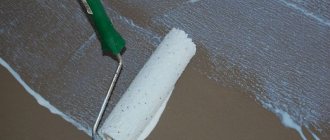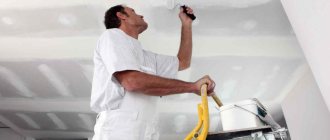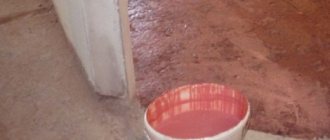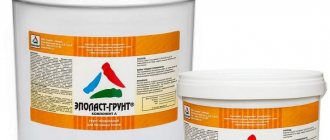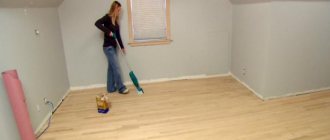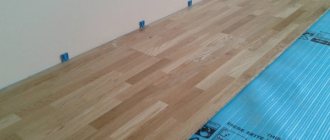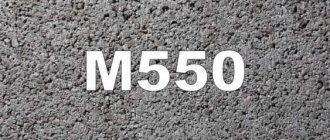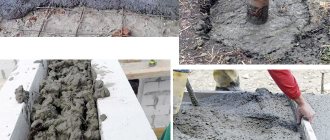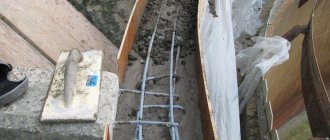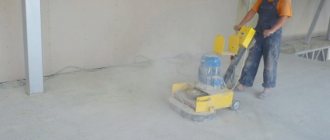general description
Structurally, such primers are a dispersion of acrylate polymers in water. As you can already judge by their name, products of this type are made without the use of chemical solvents. They are produced on the basis of ordinary water.
Essentially, such primers are liquids that contain a very large number of undissolved microscopic particles. After the water dries, the latter remain on the surface, polymerize and form a thin, durable film.
Primer for aerated concrete blocks, why is it needed?
The primer for aerated concrete is a light yellow or white, odorless composition that is used to treat walls before finishing work. As a result of treatment with a primer mixture, the solution penetrates through the pores into the aerated concrete blocks, dries, and creates a protective film. If all priming rules are followed, the excellent appearance of the walls is guaranteed for a long period.
If all priming rules are followed, the excellent appearance of the walls is guaranteed for a long period.
Advantages of primer for aerated concrete blocks
Processing blocks made of gas silicate and aerated concrete has many advantages:
- Improves adhesion. Thanks to this quality, the plaster composition adheres to the base as firmly as possible and will not dry out quickly;
- Strengthening the foundation. A primer for gas silicate blocks under plaster makes the base more durable and less crumbly;
- Reduced water absorption. Pre-treatment of blocks with a primer reduces moisture absorption, strengthening the entire structure for a long time;
- Improved thermal conductivity. After priming, the walls conduct heat well;
- Antifungal property. Special additives protect the treated surface from the appearance of fungi;
- Eliminates dust absorption. While maintaining the strength of the blocks, it prevents the structure from settling;
- Resistance to external influences. Protects against temperature changes and extends the service life of the building.
Thanks to the primer, the plaster composition adheres to the base as firmly as possible and will not dry out quickly.
Benefits of use
The main advantage of water-dispersion primers is their absolute harmlessness. Unlike compositions prepared on the basis of chemical solvents, when mixed or applied to surfaces, products of this type do not emit any unpleasant odors. The only thing is that a master working with such a primer should try to avoid getting its drops in the eyes. It is not necessary to open windows and doors when using this composition indoors.
The undoubted advantages of primers of this type are also ease of use and non-flammability. Such compositions are applied to the walls using a regular paint roller or brush. Work on surface treatment using them can be done very quickly, even if it is necessary to coat in two layers. These primers dry very quickly. Since these products are prepared on the basis of water, they cannot burn in principle.
Of course, the advantages of such primers include their effectiveness. The film they create serves as an excellent base for paints.
Caparol primer for any type of work and solving various problems. Priming the surface is not only a necessary step before painting it, but also an additional guarantee of quality in the future. It is for this purpose that various primer compositions are used. There are many different types of primer, both for exterior and interior use: wall primer, concrete primer, penetrating primer, universal primer, Caparol primer, etc. As with any product, the primer and its price depend on its quality. For more important work, it is better to use high-quality primer mixtures. As a rule, the higher the price of the composition, the more precisely the scope of application is described: primer for concrete, penetrating primer, putty primer, etc. In addition, the task of a particular primer composition is more clearly defined. To buy the primer needed for your renovation, you should carefully consider all types of primer compositions. Acrylic primer Caparol , often referred to simply as a universal primer, is used for all types of surfaces: wood, concrete, plastered, putty. Most often it is advised to buy a primer of this type, because it has a wide range of applications and when used, the surface will be ideally prepared for final finishing. Penetrating primer or also called deep penetration primer is used for low-absorbent surfaces, and can be used for the external walls of a building. Acryl-Hydrosol primer or OptiGrund ELF primer strengthens loose, uneven, crumbling surfaces, evens out absorption capacity, and increases adhesion (adhesion) to paints and other finishing materials. Due to its environmental friendliness and the absence of solvents and odor, it can be used in poorly ventilated areas, in premises for the production and storage of food industry products and food products. Capagrund synthetic dispersion primer is used as a pre-coat on smooth surfaces and before the application of synthetic resin based plasters. Capagrund has high adhesion and greatly facilitates the application and structuring of plasters. To strengthen and create a rough surface for the subsequent application of decorative coatings (for example, Arte-Lasur, Deco-Lasur, Capadecor-Putz and Capadecor Calcino-Dékor, Buntsteinputz), a primer containing Caparol PutzGrund quartz sand is ideal. For external work it is used in the Capatect facade insulation system before applying the finishing layer of decorative dispersion facade plasters. Solvent-free, water-soluble special primer for exterior and interior use CapaSol is a ready-to-use, colorless, special acrylic-based primer with high penetrating power. Used for leveling durable, mineral, highly or unevenly absorbent surfaces. CapaSol is ideal for treating porous, moisture-absorbing surfaces such as plasters, adobe bricks, indoor foam concrete surfaces and sand-lime brickwork. Solvent-based primers, such as Tiefgrund TB, are mainly used for strengthening gypsum surfaces, old plasters with sand deposits, surfaces with washed away and mechanically removed old coatings and for surfaces contaminated with waste paper and adhesive residues. Caparol Dupa-grund, a super-penetrating solvent-based façade primer, strengthens old coatings. Used for pre-treatment of critical mineral substrates as a protective primer before subsequent paint coatings, for strengthening porous plasters and concrete surfaces with sand deposits, mortars and façade putties containing cement, as well as surfaces with mechanically removed coatings. Primer treatment before applying plaster or before painting is not an expensive step, but it significantly increases the quality and durability of finishing work. For example, many builders neglect priming, and thus the function of the primer is performed by the first layer of paint and varnish. Thus, the number of layers applied to a helmet increases, which increases the cost of work and increases paint consumption (from 2 layers to 3). There are many types of primer compositions both in the domestic and foreign markets for building materials. Therefore, before you buy a primer, the price of which can vary significantly, it is worth determining the type of surface (concrete, brick, wood, metal, drywall, etc.), the type and features of the room, the type of finishing (painting, plastering, laying tiles or parquet). Depending on the volume and desired degree of quality of the repair work, each master decides for himself the issue of the price of the material, that is, what kind of primer should be purchased. For example, for significant savings, the Alpina EINLASSGRUND acrylic universal primer for walls or the Alpina GRUND-KONZENTRAT acrylic primer concentrate from the Caparol concern are suitable.
What are the disadvantages?
There are practically no downsides to primers of this type. Plasterers and painters consider the only drawback of this type of products to be that they can only be stored at above-zero, preferably room, temperature. When freezing, water-dispersion primers lose their quality. They must also be transported in compliance with certain rules.
Products from this group can only be applied to surfaces at temperatures from +5 °C and air humidity up to 80%. Under other conditions, a dispersion film on the enclosing structures simply will not form. This, of course, can also be considered some disadvantage of this type of product.
A distinctive feature of water-dispersion primers is, among other things, that they, unlike chemical compounds, create a very thin film on surfaces. Therefore, walls, ceilings and facades should be prepared as thoroughly as possible before using them.
What varieties are there?
All currently produced water-dispersion primers are divided into three main types:
- polyvinyl acetate - the cheapest, do not tolerate high humidity;
- butadiene styrene - not too expensive, not afraid of moisture, but not particularly frost-resistant;
- acrylic - the most expensive, versatile, and can withstand low temperatures and high humidity.
It is the latter type of product that is most popular among plasterers and painters. Acrylic water-dispersion primers are, among other things, abrasion-resistant and elastic.
By area of use, products of this type are classified into:
- universal;
- adhesive;
- deep penetration;
- anti-corrosion.
What is the best primer for drywall under putty?
What is the best primer for drywall? This question can be answered unambiguously. Acrylic, deep penetration, from well-known manufacturers. What to do? All that remains is to understand in detail the essence of the ongoing processes.
Only then will you be able to understand it yourself, without the help of an intrusive manager and a repair guru from next door. what are you actually buying and what functionality of the primer do you really need? There is no doubt, there is a certain reason for this, but now I will tell you a big secret. You can easily do without a primer. Moreover, this will be even better than using a drug whose purpose is only vaguely understood. It remains to decide on the composition of the solution and its other feature, which received the light hand of marketers, a deep penetration primer.
As already noted, the base surface prepared for the finishing coat must have not only certain mechanical, but also aesthetic properties, i.e. the wall before painting, wallpapering, or decorative plaster must have the same background color throughout its entire area.
Technical characteristics of water-dispersion primer
Such compositions are produced by companies in Russia, taking into account the standards provided for by GOST R 52020-2003. Products of this type placed on the market must meet the following requirements:
- number of non-volatile substances - no more than 28;
- drying speed - up to 14 hours;
- density - 1 kg/dm3.
When purchasing this product, you should also look at such an indicator as consumption. For water-dispersion primers, according to the standards, this value should be equal to 0.1-0.6 l/m2.
Areas of application
One of the undoubted advantages of water-dispersible products is their versatility. According to regulations, the following surfaces are allowed to be coated with such compounds before painting:
- mineral - concrete, blocks, brick, plasters;
- wood, OSB, chipboard, etc.;
- GKL;
- metal;
- plastic.
Such products are very widely used for all these surfaces. At the same time, the preparation of such materials before painting using water-dispersed agents is very high quality.
Universal formulations
Primers of this type are in most cases used for pre-treatment of plastered, brick or plasterboard surfaces.
Products of this type can improve the adhesion of all materials and at the same time strengthen them. Also, such primers have antiseptic properties. That is, for example, fungus does not form on surfaces when they are subsequently used. Accordingly, the walls themselves, treated with this composition before painting, can last as long as possible.
Choosing a deep penetration primer for the ceiling
In order to select the ideal composition for the ceiling, it is necessary, first of all, to pay attention to the technical characteristics of the surface being treated. Considering the fact that in most cases the floor material is concrete, the primer must have the following technical characteristics:
- small size of dispersion micelles, since the depth of concrete impregnation must be at least 5 mm;
- the primer must have antiseptic properties;
- must have a strengthening effect;
- should significantly improve the surface's ability to adhere;
- close surface pores to ensure less consumption of finishing materials.
In order for the primer to penetrate inside the base, it must be small in size.
The ideal deep penetration primer for interior work that meets all these characteristics is the so-called universal solutions. Penetrating acrylic compounds can also be used.
Adhesive agents
Primers of this group are used to treat very smooth surfaces. This could be, for example, concrete or plastic. They can also be used for ceramics, glass, and painted materials.
The water-dispersion primer “Concrete Contact”, which is very popular among plasterers, painters and home craftsmen, belongs to this type. Products of this type can significantly increase the adhesive properties of smooth surfaces. The paint on such materials subsequently lays down in an even layer and lasts for a very long time.
What primer to use for drywall
It is necessary to take into account the coating on which the primer will be applied as a top layer. So, before gluing thin wallpaper, it should be without deep penetration. For absorbent, porous surfaces, I advise using a material with the same properties.
For wallpaper, you should choose one that will bind the glue and wallpaper, that is, with deep penetration. It was a great surprise for me to learn that there are primers that are suitable exclusively for certain types of paints. For example, only synthetic ones are suitable for all paints, and pro-oil paints are suitable exclusively for oil paints, etc. I pay attention to several factors: price, expiration date and manufacturer.
If the primer is from a well-known manufacturer that has already proven itself, then there is no doubt about its quality and durability. A mixture suitable for interior work is suitable for working with drywall. Since the external one contains substances harmful to health. I liked the acrylic one the most - it is ideal for working with almost all surfaces.
I think everyone knows that before further finishing of surfaces, plasterboard or not, it should be primed. Why do this, waste money, time, make efforts, because the effect seems to be completely unnoticeable? Primer coating strengthens and improves the adhesion of finishing materials. That is, you will be able to avoid situations of uneven application of paint to the putty or peeling of the plaster.
A primer for drywall under tiles is also very necessary. It is worth considering that in this case it must be waterproof. Primer for drywall under putty requires the use of a material designated “for special purposes.”
Primers are also divided into: adhesive (increase the adhesion of materials), impregnating (level the surface) and special (has protective properties).
Anti-corrosion agents
Primers of this type contain substances that can prevent rusting. Water-dispersive agents of this group are used for treating metal surfaces. According to the regulations, they can be used for the preliminary preparation of any materials of this type. Both non-ferrous and ferrous metals can be treated with such primers.
If necessary, such products, of course, can be applied to other surfaces. For example, quite often plaster and putty are treated with anti-corrosion primers. The adhesive layer in this case is also very high quality.
GOST primer: what the label will tell you
On sale are both special compositions intended for certain types of surfaces (for example, a primer for metal), and a universal primer suitable for several types at once. How can you find out which product is suitable for a particular application? The composition of the material, or more precisely, the binding component used in it, will help you understand this. There are epoxy primers, acrylic, perchlorovinyl, alkyd and other types.
Acrylic primers
They are great for a wide variety of surfaces: asbestos cement, plaster, chipboard, concrete, brick and wood.
They are often applied before water-soluble compounds such as varnish, glue or acrylic paint. They fill the pores of the base itself, thereby reducing the consumption of final finishing products.
It is not advisable to use them on smooth surfaces. They are also not used for metal surfaces due to the lack of anti-corrosion properties. This paint primer does not have a strong odor and dries quickly!
Primer consumption is quite economical and ranges from 100 to 200 g per m2!
Alkyd products include alkyd resins. They are successfully used for processing all types of wood, including chipboard, fiberboard, before covering them with various enamels and paints.
The product penetrates deep into the wood layers, filling the pores of the wood, preventing swelling and shrinkage of the material. On substrates such as ceramics, PVC, tiles and glass (which do not have pores), this composition forms an adhesion-increasing film.
You can use it for many types of metal, such as aluminum, galvanized steel. Such a deep primer takes up to one day to dry.
Coating of foam blocks for painting
Mineral primers are products formed by an aqueous dispersion of mineral fillers and polymers. They are intended for surface treatment of concrete, expanded clay concrete, gypsum, brick, cement-sand and lime bases.
Possessing special characteristics, they remove dust and strengthen the surface being treated, improve its adhesive properties, preparing it for application of the finishing coating.
The role of the mineral component in them is played by gypsum, lime, quartz sand or cement, based on which, in accordance with the type of surface being treated, a suitable primer is selected. They are odorless, dry quickly, and have no color. This type includes, for example, Ceresit primer.
Technology of use
Applying water-dispersion primers to surfaces is extremely simple. The technology of their use includes three main stages:
- surface preparation;
- preparing the primer itself;
- actual application.
Before priming, walls and ceilings are thoroughly cleaned of dirt, leveled and dried if necessary. The composition itself is shaken before application. If it is too viscous, add a little water to it. Apply the primer to the surface with a roller in a thin, even layer. Such products should be rubbed into the walls as thoroughly as possible.
This is exactly how surfaces are treated before painting, for example, using the Birss Concrete Contact water-dispersion primer, anti-corrosion compounds, deep penetration and any others.
Birss primer
Birss primer is a professional material for preparing surfaces for decoration. Helps increase the adhesion of walls, floors, ceilings, furniture, reliability and durability of finishes, optimizes the consumption of final finishing products.
Available in several types, adapted for working with structures made of metal, concrete, wood and other materials.
The modifications “Concrete-Contact”, “Gidrofob”, “Soil ER-RV”, “Repair”, soils “ST-P”, “M”, “P”, “In-Harts”, “Leitlak”, are widely used. "Primer-Flex", "Tifen", "Hartz DPM".
Birss primers, depending on the formula, have additional useful properties: increased penetration depth (this parameter is useful when processing recently plastered surfaces), aseptic, anti-corrosion, strengthening characteristics, vapor permeability, strength, frost resistance, ease of use. When choosing and using compositions in accordance with operating conditions and the structure of the base, it is possible to obtain reliable and high-quality results without wasting extra time and money.
The advantages of Birss primer include its availability - the price of the product is significantly lower than the cost of imported analogues. At the same time, the manufacturer’s own unique developments ensure very high quality of each product and full compliance with standards and GOSTs.
